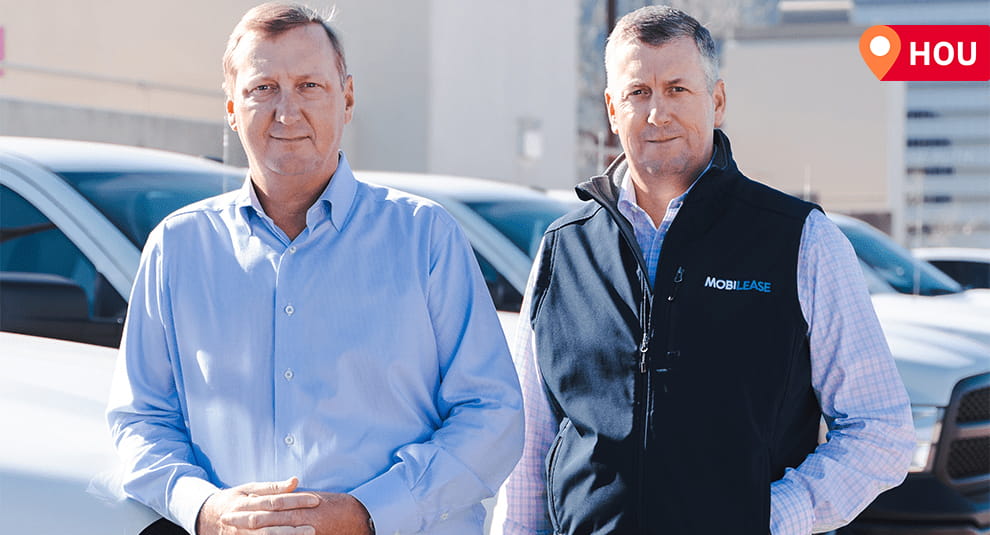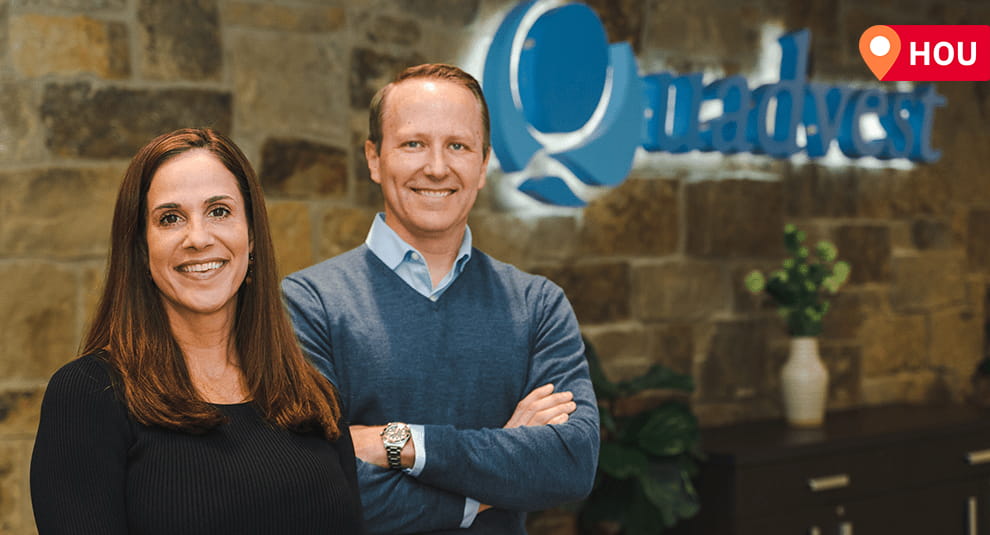A collaboration as strong as steel
For the more than 40 years that Ennis Steel Industries, Inc. has been in business, the North Texas-area steel fabricator has been profitable for nearly all of them. It’s a track record that not many companies can boast and speaks to the business sense and industriousness of the Anderson family, who founded the business and still runs it today.


Meet Ennis Steel
Founded: 1980
What they do
Headquartered in Ennis, Tex., just 35 miles south of Dallas, Ennis Steel Industries, Inc., is the leading provider of architectural steel in the North Texas area, but they also provide steel for large-scale projects from coast to coast. The company’s leading market segment is distribution and fulfillment centers for the some of the largest retailers. “Our customers are the general contractors for each project, and we project manage our jobs from providing the steel all the way through erection,” explained CEO John Anderson.
A family run business
Bryce Anderson, John’s father, founded Ennis Steel in 1980. After being involved in other businesses and projects, John decided to take a more direct role around eight years ago and became chief executive of the company.
“We see it as a legacy business in our family. There have been a lot of businesses that we’ve built up over the years, but Ennis Steel has always been a really consistent business,” John said.
How they made their mark
Ennis Steel produces an average of over 30,000 tons of steel per year—a feat made possible both by a strong, talented labor force and a dedicated investment in technology, including automation.

A key component of their “secret sauce” is investing in technology. In fact, CEO John Anderson considers it the company’s biggest advantage. In his words: “We strive to be early adopters in all systems and equipment to stay a step ahead of our competition.”
For instance, in 2015 Ennis Steel decided to automate more of its production process—and quickly. However, they didn’t want to risk too much of their working capital to get the project done.
Fortunately, a year earlier, Ennis Steel had found the right financial services provider in Bank of Texas. The relationship started with a small revolving line of credit, which has grown over time to meet Ennis Steel’s capital needs. “Bank of Texas was able to step in and give us the confidence that we had plenty of runway,” Anderson recalled.
“Bank of Texas was able to step in and give us the confidence that we had plenty of runway.”
John Anderson, CEO of Ennis Steel Industries, Inc.

Focused on growth and the challenges of modern business
The automation that Bank of Texas helped Ennis Steel finance has aided the steel fabricator as it contends with its biggest challenge: having enough workers to support the company’s growth trajectory. Ennis Steel’s largest projects today are 10 times the size they were fewer than 10 years ago. Although the company is constantly recruiting and developing talent from within the organization, it is still sometimes difficult to find enough employees at all levels, especially when the labor market in general is tight, Anderson said. But technology has enabled the company to do more with the people they have.
“Those investments in technology really propelled us forward, with higher productivity rates and overall efficiencies in costs. We're producing a lot more per headcount now in our operations,” Anderson explained. “And honestly, with the labor market challenges over the last two years, I don't know how we would have been able to navigate that had we not had automation.”
Along with the tight labor market and consequently higher labor costs, Ennis Steel also had to contend with supply chain disruption and rising raw material prices. Fortunately, Bank of Texas was able to provide support by increasing the steel fabricator’s revolving line of credit.
Anderson noted how that the increase has helped. “With the significant growth in business compounded with radical increases in material costs, our business needed unprecedented support in our working capital line,” he said. “We’ve been able to stay ahead of it with clear communication and extraordinary support from our bank. This is helping us to truly differentiate our business in our industry.”

To truly act as a trusted collaborator requires more than just dollars and cents. The Bank of Texas commercial banking team often sits down with the Ennis Steel team to discuss their day-to-day operations, how they go about procuring their materials, industry reports and macro and micro trends.
“We have a very open and honest working relationship,” Anderson agreed. “I don’t hesitate to share news of recent wins or concerns regarding challenges we see on the horizon."
Meanwhile, as Ennis Steel is growing, so has its relationship with Bank of Texas. Since coming onboard as a client in 2014, the relationship has grown from a small revolving line of credit to a much larger one, plus equipment leasing and financing for a new headquarters. A high level of trust and partnership, too, has developed. In Anderson’s words: “Bank of Texas has proven to be a great partner in growing our business. As our needs have grown, we consider the bank to be an extension of our team in thinking about how to accomplish our family’s goals as we facilitate the needs of the business.”
"Bank of Texas has proven to be a great partner in growing our business. As our needs have grown, we consider the bank to be an extension of our team in thinking about how to accomplish our family’s goals as we facilitate the needs of the business.”
John Anderson, CEO of Ennis Steel Industries, Inc.
Your questions about revolving lines of credit answered
The corporate banking team at Bank of Texas, explains:
Does a credit revolver affect a business’s credit worthiness differently than a single-use loan?
Not from the bank’s point of view. We don’t differentiate between revolving lines of credit or term loans; we look at everything on a committed debt basis. However, it is very common that having access to a revolving line of credit can help a client be positioned to win bids and garner new business, especially in the construction and manufacturing industries.
Are there any factors that make it difficult for a business to have their revolving line of credit increased?
There are a number of factors that might hinder increased access to revolving lines of capital. A few key ones are accounts receivable that have become increasingly dated (they aren’t collecting their accounts receivable as quickly as before), higher accounts receivable concentrations to a single customer, and stale inventory (it isn’t turning as fast). Other notable factors include an increased leverage profile [i.e. increased indebtedness] and reduced cash flow.
What are some best practices for businesses with revolving lines of credit?
Managing working capital is essential to successful day-to-day operations. Businesses should do their best to forecast working capital needs, and ensure they have adequate liquidity and access to capital to meet their future needs. Factors important to identify and assess are supply chain disruptions, higher raw material costs / inflationary pressures, relationships and terms with vendors, seasonality, and managing their customers and the payment/ credit terms they provide.
More success stories
-
Success on the rise
See how Empire Baking became property owners with help from Bank of Texas.
-
Driving growth in vehicle and equipment leasing
40-year-old company depends on Bank of Texas to support complex financial needs.
-
Family-owned water utility thrives on liquidity
A partnership approach, rather than transactions, supports Quadvest’s payment process.



